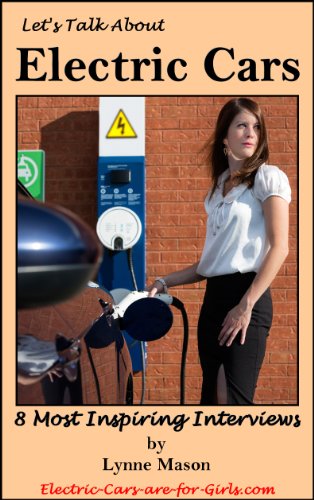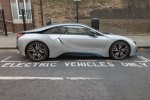Electric Car Books:
Buyers Guides and Conversion Manuals
Build Your Own Electric Vehicle
Be warned: there are quite a few physics equations dealing with drag coefficient and the like. If you got a D in college physics, Do Not Be Alarmed. You really don't have to sweat this. The main thing he's saying with all the letters and numbers and symbols and whatnot is that you'll get the best range out of your batteries if you choose an aerodynamic car, and lighten it up as much as you can. Fortunately for me, the equations don't have to be understood to be used. Just plug and chug. #ad
Same as the 2nd edition, the author advocates converting small pickups (You can see why on p.105 where he compares the aerodynamics of several potential donor vehicles).
Small pickups are very sensible donors for several reasons:
- You've got a good passenger-free (and accessible) area in the bed to lock the batteries down so you they don't become missiles flying around the cockpit in case of an accident;
- They're designed to haul things, so you can put plenty of battery weight back there, and distribute it without having to be design-creative;
- They're already fairly aerodynamic, like we were just saying;
- They're often standard-shifting vehicles to begin with.
New in this edition are LiFePO4 batteries. If you're wondering what kind of batteries you should use in your electric car, this edition discusses LiFePO4 batteries and why they are great for conversions. It's official: lead acid golf cart batteries are OUT, LiFePO4 is IN.
And Tesla, of course. Plenty of Tesla.
Build Your Own Electric Motorcycle
Next, Build Your Own Electric Motorcycle (Tab Green Guru Guides) by Carl Vogel, for those of us building electric motorcycles. Actually, the same basic principles apply for converting motorcycles to electric as for cars, except you don't have a lot of margin for error regarding weight and space. #ad
This book is remarkably thorough, and I'd recommend it for anyone converting anything to electric. It's that good.
There are a bunch of graphs and equations in here, too, but no worries - they're very streamlined and practical and you'll be happy they're in there for understanding purposes. He leans toward lithium batteries, though it's not a necessity.
Here's my question for the author: How am I supposed to ride an electric Harley conversion without all that beautiful engine noise? There's no chapter in the book on fixing that little problem. If you know of a solution to this terrible disadvantage of electric motorcycles, please hit the "contact" button up there at the top and let me know. We'll all thank you.
How To Design and Build an Electric Car or Vehicle
I liked this one! It's British. (Fine with me.) When you're building an EV, you have an opportunity to include ONLY what you want, and tailor it exactly to your needs, so that you can most efficiently use the batteries and motor that you choose. Need to commute 10 miles? Why drag around 100 miles worth of batteries, then? #ad
He makes the case for designing and building a car from scratch rather than converting a gas guzzler, if that's your thing. You also get to be a LOT more creative in the design.
Electric Motors and Control Techniques
This one was recommended to me by more than one conversion shop. It's about optimizing electrical systems so they work well. #ad
Often people don't think about this aspect of building an electric car. They look at range and speed as an absolute, and settle for less than the system they have is capable of. They don't think they can understand or implement the optimizations, so they don't bother.
I noticed right away that the conversions that electrical engineers do always seem to get more bang for the buck than the conversions your average jill mechanic does for herself. Wondering why...I began to investigate. The thing that stood out the most to me is that optimization of systems is second nature for the engineers.
If you want to spend your money and time wisely, check into optimization. It's worth the effort.
Convert It!
This is another classic. It covers step by step how to convert. You might say it's kinda old, but some things don't change all that much, right? #ad
Electro Automotive, one of the best-known sellers of conversion kits and parts in the United States, includes a copy of this book with every kit purchased.
I'll bet there's a reason for that!
Range Confidence: Drive Far, Charge Fast, With Your Electric Car
"With our electric car we want to focus on Range Confidence rather than remain trapped in Range Anxiety," writes author David Herron. "Rather than focus on the ways that an electric car is limiting, we can focus on the process of bypassing the limitations."#ad
This book, written in 2015, is designed to help new and prospective electric vehicle owners develop their "Range Confidence". It is filled with valuable information about how to charge at home, at public charging stations, and in the gaps on long trips where there are no public EV charging stations for many miles (spoiler: campgrounds with RV hookups and an adapter you carry in your car) so you never have to worry about your car being carried home on the "Flatbed of Shame". Highly recommended.
Build Your Own Plug-in Hybrid
Build Your Own Plug-In Hybrid Electric Vehicle (Tab Green Guru Guides), for hybrid converters. Note: this book is not for converting a gas-guzzler into a hybrid. This book shows you how to convert a hybrid into a plug-in hybrid. Just to be clear.#ad
If you've got a hybrid and you're wondering exactly how to add batteries to it and plug in for more miles per gallon? This is the book you're looking for. The author discusses in here the different batteries you might choose, and where to put them, and how to attach them; there are some control schematics; and, very importantly, he discusses what this sort of retrofit will do to your hybrid's warranty. (Answer: modifications won't affect the warranty. The only part of the warranty that can be affected is the actual part you alter.)
Did you know that hybrids come with 4 or 5 warranties? It's in the book(p. 223).
Required text: As an Amazon Associate I earn from qualifying purchases.









